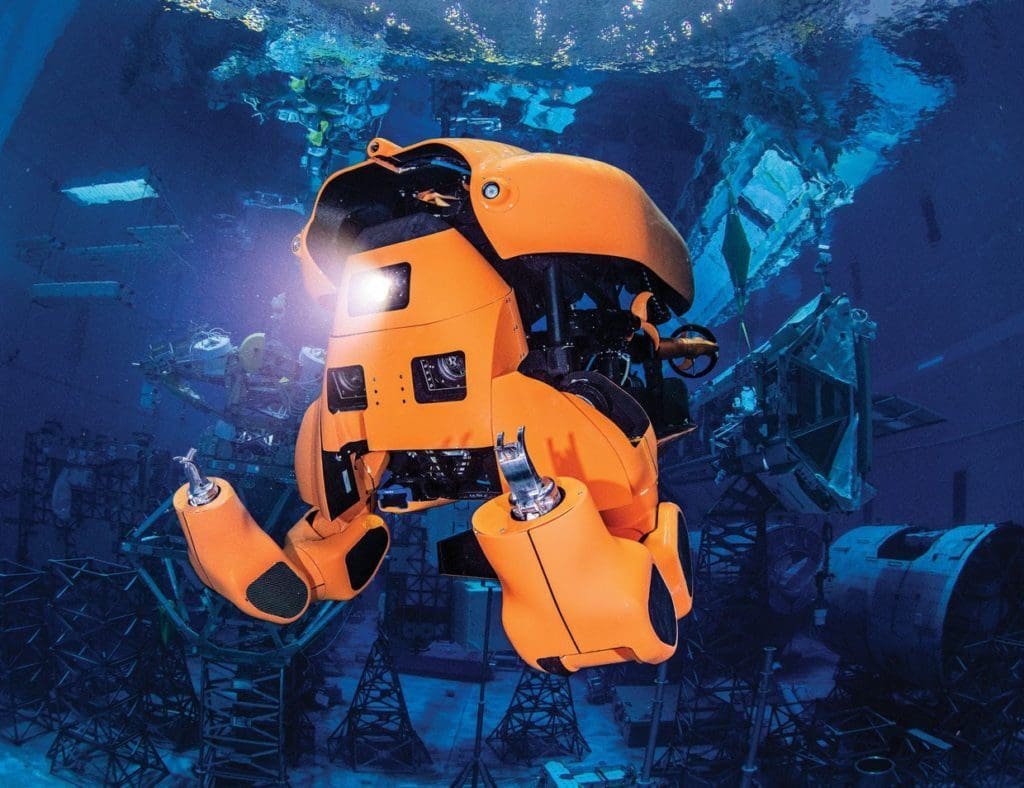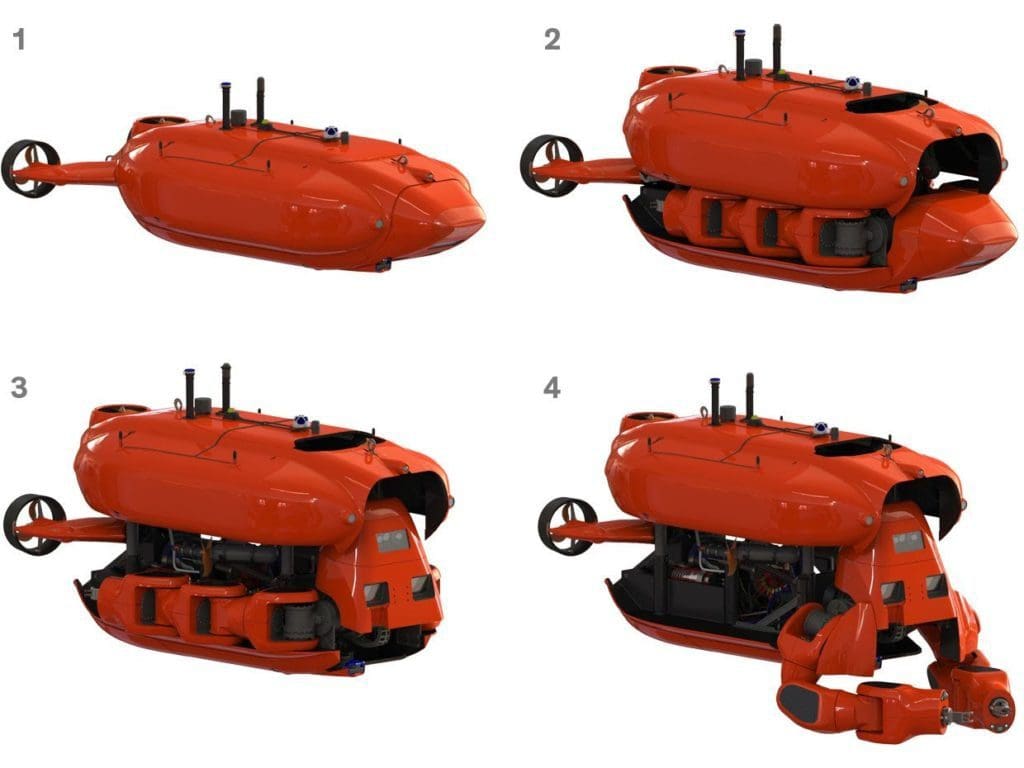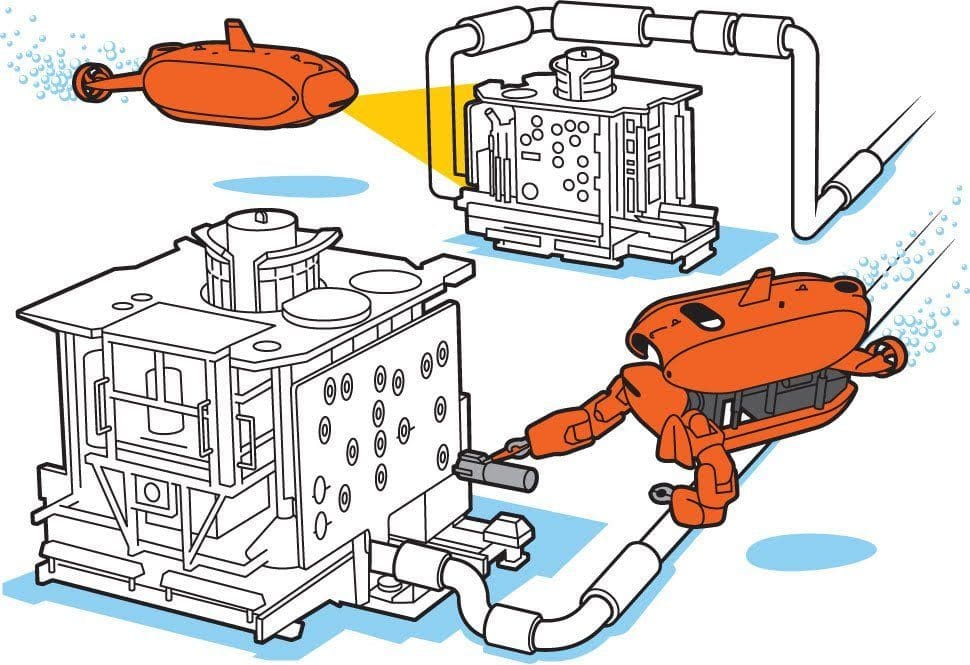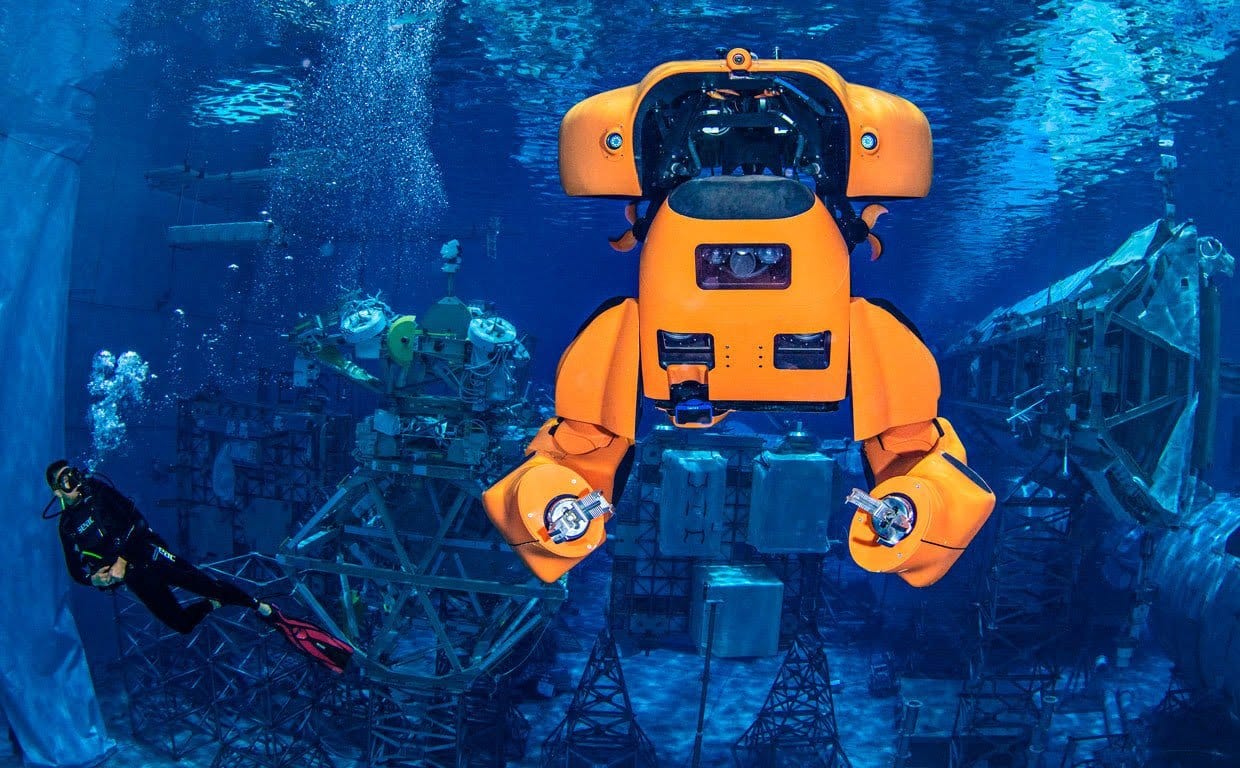The scenario is suggestive: two astronauts practice a spacewalk. In the muffled silence of their helmet, the only variations are represented only by the sound of their breath and the voice of the Mission Control in the headphones.
We are not in space, however. We are in Houston, in the huge swimming pool that serves as a gym for astronauts training for NASA missions. A few meters from the "astronauts" who are actually walking underwater, another object shares the abyss with them: it is Aquanaut, an underwater robot transformer with truly special characteristics.
Aquanaut moves through the water like a real submarine, but unlike unmanned vehicles, or UUVs (unmanned underwater vehicles), it has an extra ability.
If necessary, in a twist worthy of scenes from films like "Transformers", the upper part of the robot rises vertically and shows two large arms that emerge from the sides. A head full of sensors rotates on itself to position itself in the center, and the transformation is complete. It may be the 70s that gave me birth, or the color orange, but something in him echoes the Getter Robot, if you know what I'm talking about.
In short, here you are served a submarine that when needed turns into an underwater and semiumanoid robot transformer.
Aquanaut is a radical evolution of UUVs, developed by a company called Houston Mechatronics Inc. (HMI), which will totally change underwater robotics.
Traditional UUVs fall into two categories: fast-navigating, more elongated submersibles, and sample-collecting submersibles, stockier and slower, usually attached to the boat by a cable. HMI aims to combine the functions in a single underwater robot transformer: fast in navigation and versatile when it comes to collecting materials. No one had ever attempted such an approach.

Aquanaut was designed for oil platforms and offshore installations, complex environments that currently use robotic technologies that have been the same for decades. HMI's experience could play a key role: 75% of employees also work for NASA, extreme environments are not a problem.
HMI co-founder Nic Radford worked on advanced robotics projects at Johnson Space Center in Houston for 14 years. “And I guarantee you that going into space is harder than going underwater,” he says with a hint of pride. “For robots, however, the situation could be reversed. Dynamic environments such as underwater can be 10 to 50 times more difficult than space environments.”
Transformation

1 - Aquanaut travels in its normal submarine configuration to patrol and traverse underwater areas. She can do it for a long time, with a range of over 200 kilometers.
2 - Once at the destination, the robot transforms
3 - In just 30 seconds he pops his head out…
4 - … and the arms to become operational.
The metamorphosis is the result of the work of four linear actuators (and several waterproof motors) powered by a lithium battery not unlike those that equip today's electric cars.
Its “brain” incorporates stereo cameras, 3D sensors and sonar.
I might not even tell you, but I bet you would easily guess that at the ends of his arms there are sturdy "claws" also equipped with sensors.
Since its inception in 2014, HMI has raised over € 20 million in funding. Five years later, here is the real prototype of the underwater transformer robot come to life and start testing in controlled environments.



